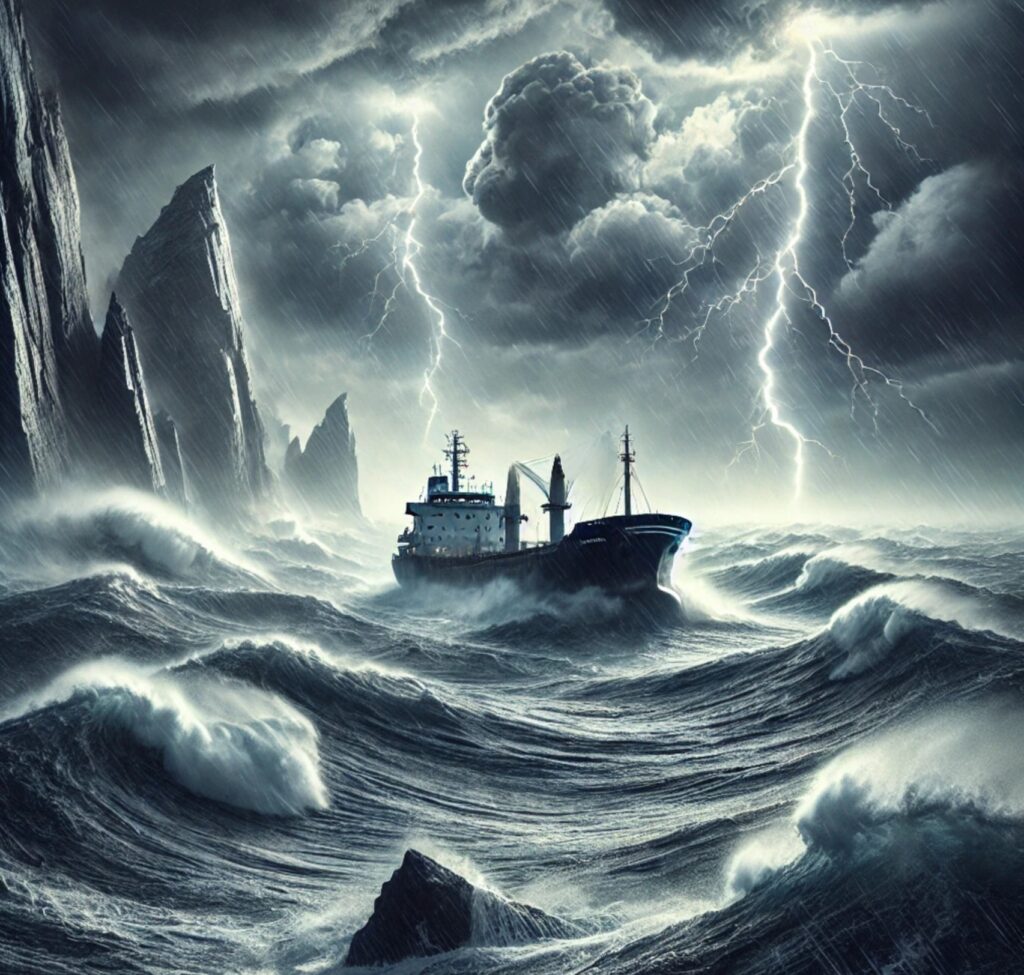The vast and unpredictable oceans of our planet have claimed countless ships over the centuries, but some regions are particularly notorious for their treacherous conditions. Among them, the Bay of Biscay stands out as one of the most dangerous seas for maritime travel. Nestled between the western coast of France and the northern coast of Spain, this body of water has earned a fearsome reputation due to its brutal storms, extreme wave activity, and historical shipwrecks.
Geography and Oceanic Conditions
The Bay of Biscay spans approximately 225,000 square kilometers (87,000 square miles) and is bordered by France to the north and Spain to the south. It forms a critical passage for shipping routes connecting Europe to the Americas and beyond. However, its unique geographical location makes it highly susceptible to violent weather patterns.
One of the key reasons for its notorious reputation is the way it interacts with atmospheric pressure systems. The bay frequently experiences intense low-pressure systems, particularly in winter, leading to hurricane-force winds and sudden storms. Waves in the Bay of Biscay can exceed 10 meters (33 feet) during peak storms, making it one of the most challenging areas for seafarers.
Additionally, the underwater topography exacerbates the danger. The continental shelf drops sharply into the deep abyssal plain, creating conditions where waves rise suddenly and violently, an effect that has sunk numerous vessels throughout history.
Historical Shipwrecks and Maritime Disasters
The Bay of Biscay has witnessed some of the worst maritime disasters in history. Listed below are significant shipwrecks arranged chronologically:
- The Spanish Armada Losses (1588): Several Spanish galleons, battered by storms, were lost in the Bay of Biscay during the ill-fated Spanish Armada campaign.
- The Santísima Trinidad (1762): This Spanish treasure ship, loaded with valuable cargo, was sunk by British warships in the Bay of Biscay, contributing to the region’s rich maritime lore.
- The 18th-century naval disasters: The bay was the site of numerous shipwrecks during conflicts between European naval powers. Many warships met their fate due to the region’s violent storms rather than enemy fire.
- The RMS Amazon (1852): A British Royal Mail Steamer, this ship caught fire in the Bay of Biscay and was abandoned, with only a fraction of its passengers and crew surviving.
- The SS Normandy (1870): This French ocean liner, known for its luxurious design, struck an unknown object in the Bay of Biscay and sank, adding to the region’s maritime tragedies.
- The SS Ville du Havre (1873): This French passenger ship collided with another vessel in the Bay of Biscay and sank within 12 minutes, leading to the loss of 226 lives.
- The HMS Ardent and HMS Acasta (1940): These British destroyers were sunk by German warships in the Bay of Biscay during World War II, with heavy casualties among the crew.
- The Lancastria Disaster (1940): While evacuating British troops and civilians from France during World War II, the RMS Lancastria was bombed by German aircraft in the Bay of Biscay, resulting in the deaths of an estimated 4,000 to 6,000 people, making it one of the deadliest maritime disasters in history.
- The SS Meknès (1940): A French passenger ship carrying repatriated prisoners of war was torpedoed by a German E-boat in the Bay of Biscay, leading to the deaths of over 400 people.
- The Submarine U-966 (1943): This German U-boat was attacked by Allied aircraft in the Bay of Biscay and ultimately scuttled by its own crew after being heavily damaged.
- The Surcouf (1942): The French submarine Surcouf, one of the largest of its time, mysteriously disappeared in the Bay of Biscay, with theories ranging from accidental collision to enemy attack.
- The USS Thresher Disaster (1963): While not directly in the Bay of Biscay, this American submarine was part of naval exercises in the Atlantic when it tragically imploded at a great depth, reinforcing the dangers of deep-sea navigation.
- The Prestige Oil Spill (2002): Though not a traditional shipwreck, the sinking of the oil tanker Prestige in the Bay of Biscay led to one of Europe’s worst environmental disasters, spilling over 63,000 tons of oil into the sea.
Modern Challenges for Ships
Despite technological advancements in shipbuilding and navigation, the Bay of Biscay remains perilous.
Storm Frequency: Studies show that storms in the Bay of Biscay occur more frequently than in most other European waters. Data from the European Centre for Medium-Range Weather Forecasts (ECMWF) indicates that winter storms here can sustain wind speeds of over 120 km/h (75 mph).
Ship Incidents: Reports from the International Maritime Organization (IMO) highlight that between 2000 and 2020, over 300 serious maritime incidents were recorded in the Bay of Biscay, with many involving commercial vessels facing extreme weather.
Fishing Industry Risks: The bay is also a major fishing ground, and its unpredictable waters pose constant dangers to smaller fishing vessels, often leading to capsizing incidents.
Tanker and Cargo Ship Risks: Statistics from Lloyd’s List Intelligence indicate that over 7% of global maritime cargo accidents in the past decade occurred in the Bay of Biscay, with incidents ranging from mechanical failures to weather-related disasters.
Air and Sea Rescue Operations: According to the French Maritime Prefecture, an average of 50-70 emergency rescue operations are conducted in the Bay of Biscay each year to assist ships in distress.
The Unyielding Grip of the Bay
The Bay of Biscay remains one of the most treacherous maritime regions in the world, claiming ships and lives for centuries. According to the European Maritime Safety Agency (EMSA), an average of 15-20 ships per year report major difficulties in these waters. While modern technology has reduced the risks, the bay’s extreme weather conditions and unique geography ensure that it remains a formidable challenge for sailors. Whether one is navigating a massive cargo ship or a small fishing vessel, the Bay of Biscay demands respect and careful preparation to survive its unpredictable and often merciless waters.

